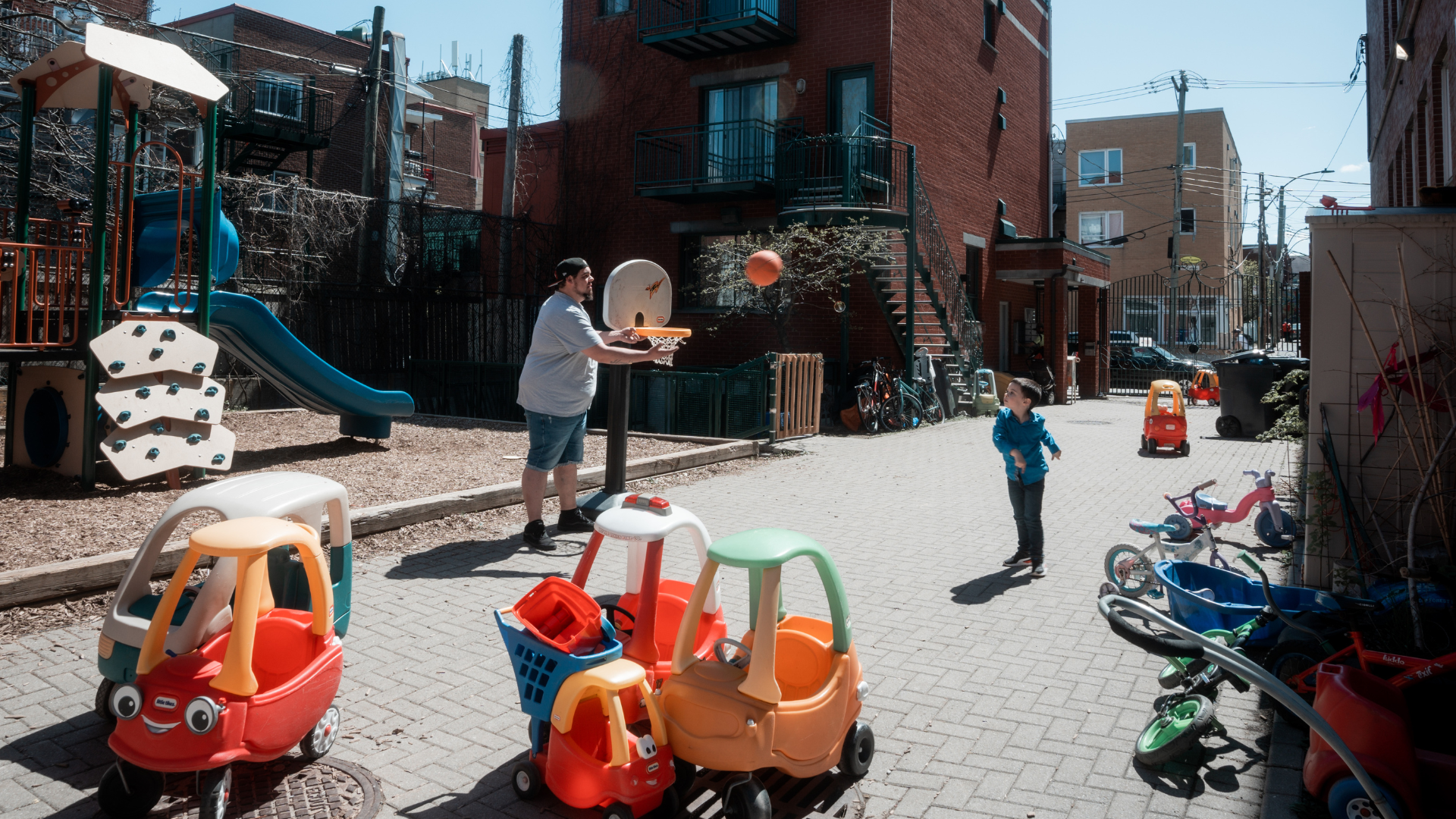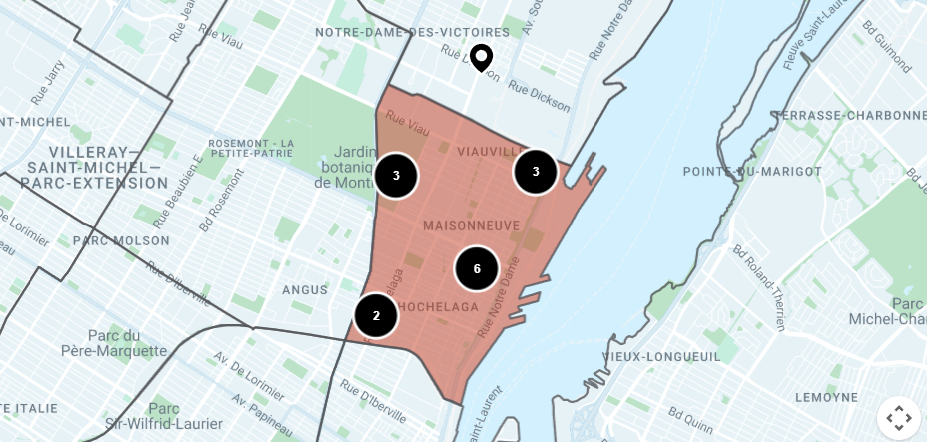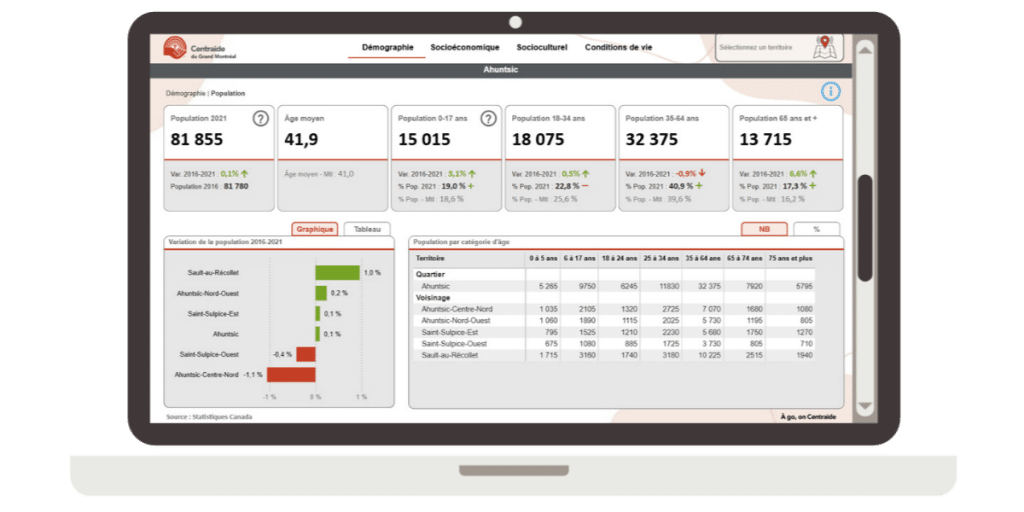
Hochelaga-Maisonneuve
Snapshot of
Hochelaga-Maisonneuve

Discover key facts
👩🦰 Population – strong presence of young adults
The neighborhood is distinguished by a strong presence of young adults aged 18 to 34 (37%) and a low proportion of children (13%) and seniors (10%). Hochelaga-Maisonneuve ranks second among Montreal neighborhoods with the lowest proportion of seniors. Its age distribution resembles that of Montreal’s central neighborhoods.
👴 People living alone and single-parent families – distinctive features of the neighborhood
The proportion of people living alone is well above the Montreal average (28%), reaching up to 30% in some areas. This trend is particularly pronounced among seniors: nearly 60% of them live alone in Hochelaga-Nord and Maisonneuve. Single-parent families are also more common than in Montreal (39% vs. 31%), reaching 43% in Hochelaga-Sud.
📍 Poverty – above Montreal average
The neighborhood is home to 6,490 low-income residents, mainly concentrated in Hochelaga-Nord (2,575 people) and Maisonneuve (2,540 people). The low-income rate (14%) exceeds the Montreal average (11%) and ranges from 13% to 15% across sectors.
✏️ Low educational attainment (without a high school diploma) – among the lowest in Montreal
The secondary school graduation rate among youth is one of the lowest in Montreal, well below the city average: 72% compared with 84% in 2023.
🏢 Housing – one of the fastest-rising costs in Montreal
Between 2022 and 2024, the average rent for a two-bedroom apartment rose by 35%, compared with 13% in Montreal. This increase is among the highest in the Greater Montreal Centraide territory. In 2024, the average rent for a two-bedroom apartment was $1,164, roughly comparable to the Montreal average ($1,145).

Dashboard
Consult this dashboard to access a wide range of demographic, socio-cultural/economic, and living-condition data.



